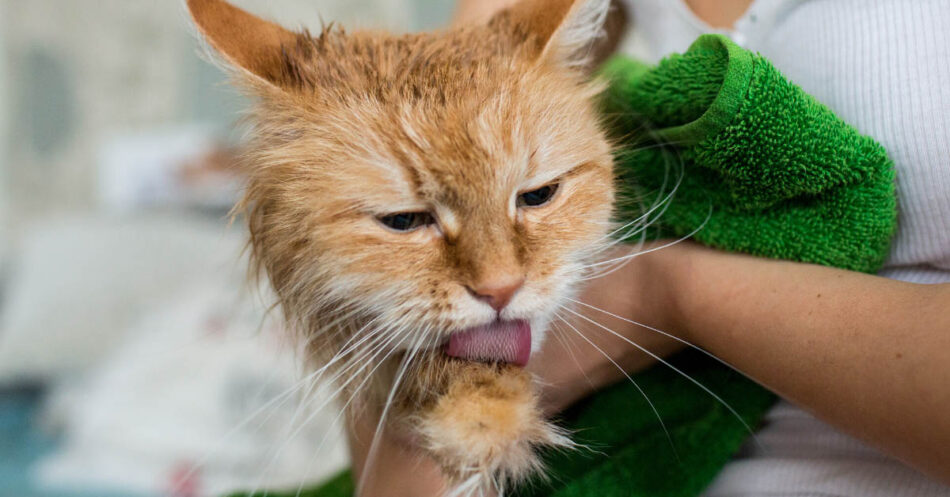
How to Give Your Cat a Bath
This post may include affiliate links. Please read my disclosure policy.
Most cats are meticulously clean. Their rough tongues are the purr-fect tool for keeping their fur smooth and removing dirt and loose hair. If you pay close attention, you’ll probably notice your cat enjoying a good tongue bath several times every day.
As much as they enjoy cleaning themselves, however, most cats are not fans of being in the water. This can be a problem for cat parents who want or need to bathe their feline friends, especially when those friends tend to communicate their displeasure with their sharp claws. There’s no doubt about it – bathing your cat can be risky business!
There are a few things that you can do to make bathing your cat a little easier on everyone. Here’s what you need to know about giving your cat a bath.
Do Cats Really Need Baths?
Since they bathe themselves so frequently, most cats won’t need regular baths. However, there are situations that may require a little human intervention.
Some cats have a hard time properly grooming themselves. For example, arthritic elderly cats may not be able to get at those hard to reach places. And overweight cats may have a difficult time bending and stretching to clean themselves thoroughly. Some long-haired cats may also have a hard time keeping up with their grooming routine.
Pin Me!

In addition, curious kitties sometimes find themselves in messy situations. This happens more frequently with cats that spend time outdoors, but even an indoor cat has the potential to get dirty. For example, they may decide to stick their nose or get a little too close to your toddler at mealtime! Cats also occasionally get a little messy while they’re using the litter box.
Cat parents with allergies sometimes find that regular brushing and occasional bathing cut down on the dander and make it possible to enjoy more close-up time with their feline friend.
An occasional bath is also a good time to check your cat for hot spots (Yes! Cats get them too!), feline acne, and any bites or scrapes that might require attention. Along with regular brushing, a bath every now and then may also help to prevent hairballs and matting.
How Often Should You Bathe Your Cat?
Because cats clean themselves, as a general rule baths should be infrequent and for a specific reason. Many cleanliness issues can be quickly solved with a quick wipe-down rather than a full cat bath. For cats that need a regular bathing schedule, many experts recommend every 4-6 weeks. If your cat needs regular baths for any reason, the frequency will depend on a number of factors including:
- Skin. Bathing removes natural oils and good bacteria, so frequent bathing could contribute to dryness or other skin issues.
- Coat type. Longer coats will require more maintenance than shorter coats.
- Breed. Hairless cats need occasional wiping down or bathing to remove oils that would normally be absorbed by hair.
- The reason for the baths.
If you feel that your cat will need more than the occasional bath, your veterinarian or groomer can help you determine the bathing schedule that will be the best for your cat’s needs.
How to Give Your Cat a Bath
1. Get Your Cat Ready
Here are a few things you will want to do before your cat’s bath.
- Trim her nails. If your cat tries to claw his way out of the sink, you’ll be glad you removed those sharp points!
- Brush her fur. It’s important to remove mats and tangles before a bath. Not only will these be more difficult to comb through after they’ve gotten wet, they could also trap shampoo and cause skin irritation. A good pair of grooming gloves
is great for removing tangles. For tougher mats, you may want to use a comb, like this one
.
- Tire her out. You’ll want your cat in as mellow a mood as possible at bath time, so a good vigorous pre-bath play session is a great idea.
2. Gather Your Supplies
You’ll want to have everything you’ll need within reach. If you need to leave the sink for something you forgot, you’ll most likely end up having to coax your cat out from under the bed or the sofa once you’ve gotten it!
Here’s what you’ll want to have on hand before you start bathing your cat:
- A nonstick mat or other non-skid liner for your sink that will prevent your cat from slipping around.
- A pitcher or large plastic cup for rinsing if you’re not planning on using your sink’s spray nozzle.
- Shampoo. In my opinion, the best cat shampoo is FoamCare by Vetericyn. Don’t let the picture of a dog on the bottle deter you! It’s formulated for both dogs and cats, and it’s even safe for kittens. Its spray nozzle makes it easy to apply with one hand, and it rinses off quickly – a definite plus if you’re dealing with a squirmy cat! Use my code PETLIVING to get 20% off your purchase at Vetericyn.com.
Absorbent towels. The more water you’re able to soak up after your cat’s bath, the sooner he can put the whole experience behind him! I like this towel for drying my pets. - Feliway diffuser for calming. This diffuser uses calming pheromones to provide instant comfort.
- Treats. Finish off your cat’s bath with a yummy treat to reward him for putting up with the indignity he’s just been through. It will also help him to form more positive associations if he needs another bath in the future.
- Another human to help. This isn’t absolutely necessary, but it does make things easier. I always get my husband, Paul, to help me bathe the dogs or our cat Olivia because it’s nice to have an extra set of hands so I don’t have to let go of them while they’re in the sink.
3. Bath Time!
Once you’re all set up, all that’s left is the bath itself. The sink is probably the easiest place to bathe a cat, since you won’t have to bend over, and you can use the spray nozzle for washing and rinsing. Here’s how to give your cat a bath.
- Adjust the water temperature. You’ll want to make sure that the water is warm, but not hot. Aim for the temperature you’d use if you were bathing a baby.
- Wet your cat’s fur. Hold your cat so he can’t jump away, and gently get him wet, either with the spray nozzle or by pouring water over him. Try not to get your cat’s head or face wet.
- Now it’s time to lather up. Add shampoo and gently work it in. If you’re using FoamCare Shampoo, just 2-3 sprays are usually enough.
- Rinse thoroughly.
- Dry your cat well with a clean, absorbent towel.
- Once your cat is mostly dry, you can clean his face. You can use a damp cloth to wipe off surface dirt. I like to follow up with one of Vetericyn’s products that are specifically formulated for the delicate facial area. They’re all safe and non-toxic, and they won’t sting or burn. Feline Antimicrobial Facial Therapy is great for treating and preventing feline acne and other potential irritations on your cat’s face. You could also use Antimicrobial Eye Wash to remove debris and irritants and to clean tear stains. And Antimicrobial Ear Rinse is just what you need to remove dirt from your cat’s ears and leave them squeaky clean. Use my code PETLIVING to get 20% off your purchase at Vetericyn.com.
- Finish with a yummy treat and lots of praise.
If your cat ever needs a bath, don’t panic! Prepare ahead and use the right products, and he’ll be squeaky clean before you know it.







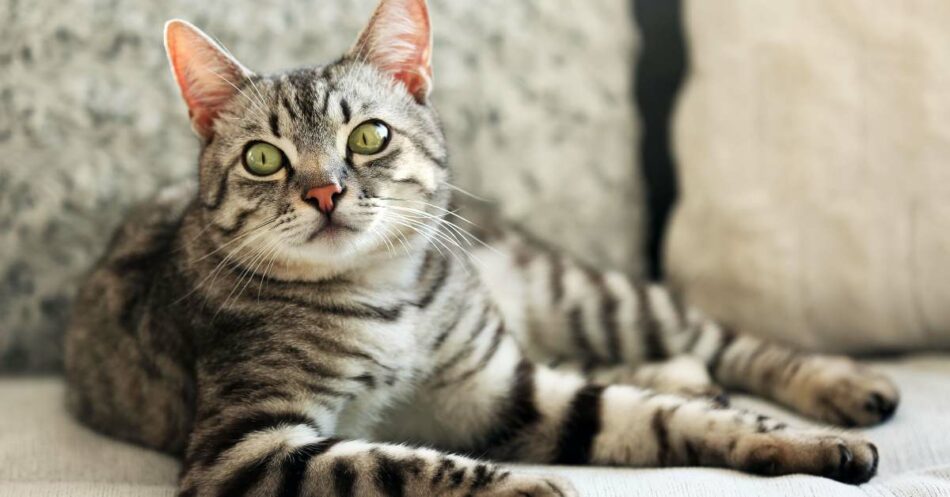
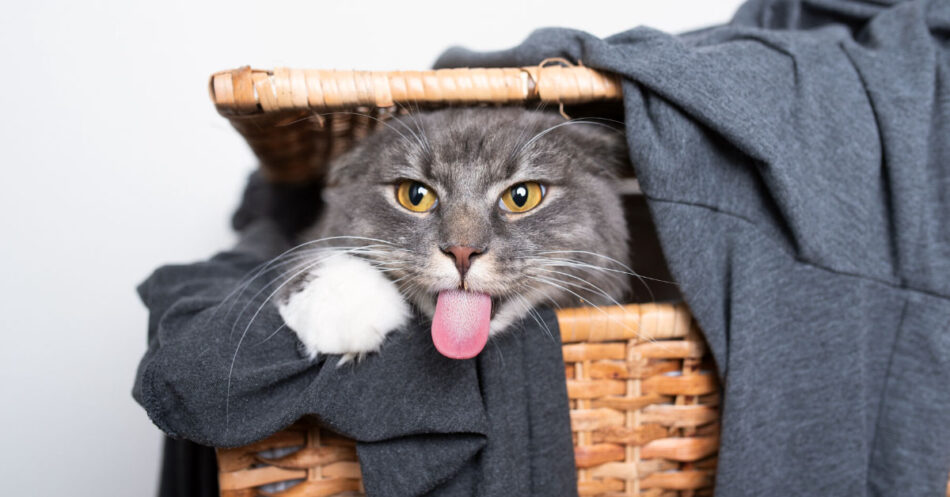
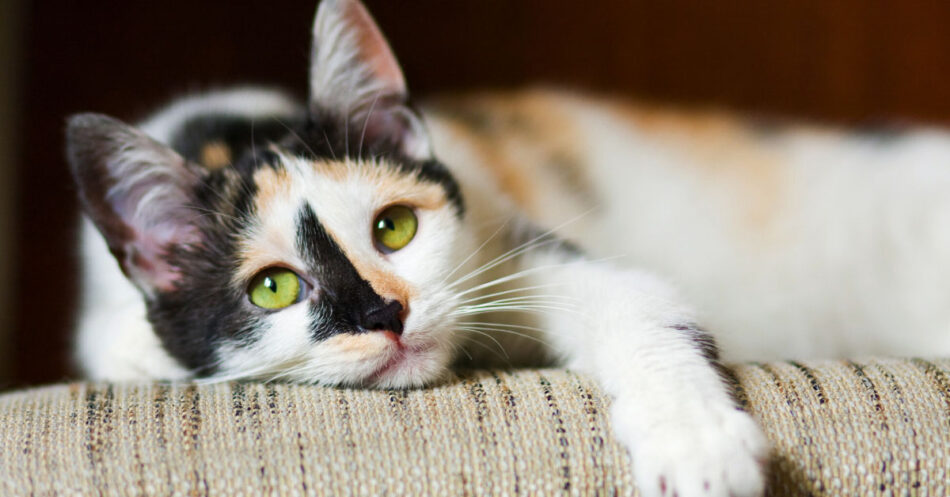
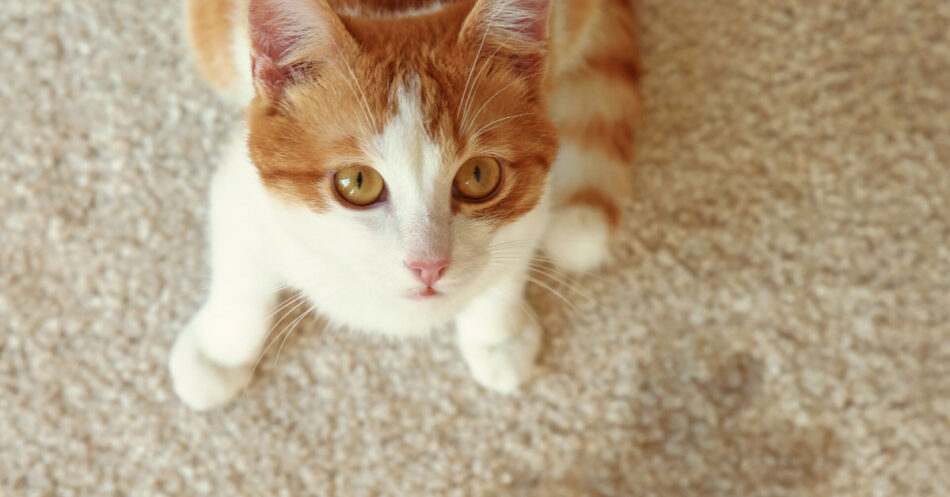
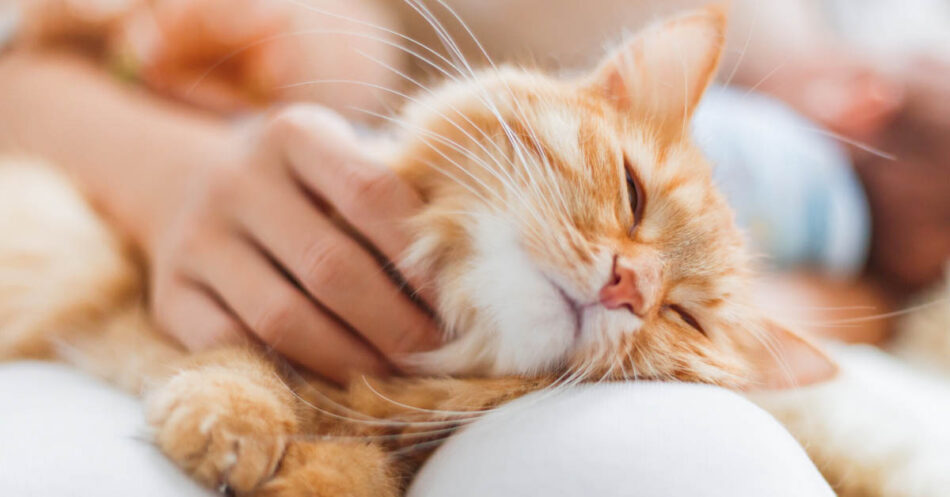
My cat is obese and can’t clean her behind properly so am trying to figure out a way to clean it myself. She’s 22 pounds so not easy to lift into a sink or tub.
Julie Tanner I have a long haired, part Maine Coon boy that has similar issues. When I see his butt getting dirty my first try is to quickly If comb out whatever the issue is. First I use the big comb that has teeth at multiple lengths, then when it goes through. If/when I hit a matt or tough tangle, instead of pulling, I use 4” scissors to trim off the problem area. Then I switch to the flea comb. During his grooming is typically the ONLY time he gets his favorite treats.
After combining and trimming, if he’s still not clean I try playing with a DAMP WASH CLOTH. I use it to ‘pet’ his back and slowly work to his butt. He doesn’t like his butt touched.
My final cleaning method if the previous doesn’t do the job is the animal ‘wet wipes’. They are safe for animals. I think they’re marketed towards kittens & puppies. With those I usually go straight for the butt area and use with the pressure you’d use with an actual baby.
Keeping the butt fur trimmed shorter usually diminishes future dirty butt problems. The shorter, less dense fur makes it easier for the kitty to clean itself. And as I mentioned before, because my baby is overweight, I only give him his favorite treats while being groomed. Even when I don’t want to or have the time to groom him right then, I make sure that I at least comb him when he gets treats. Good luck.